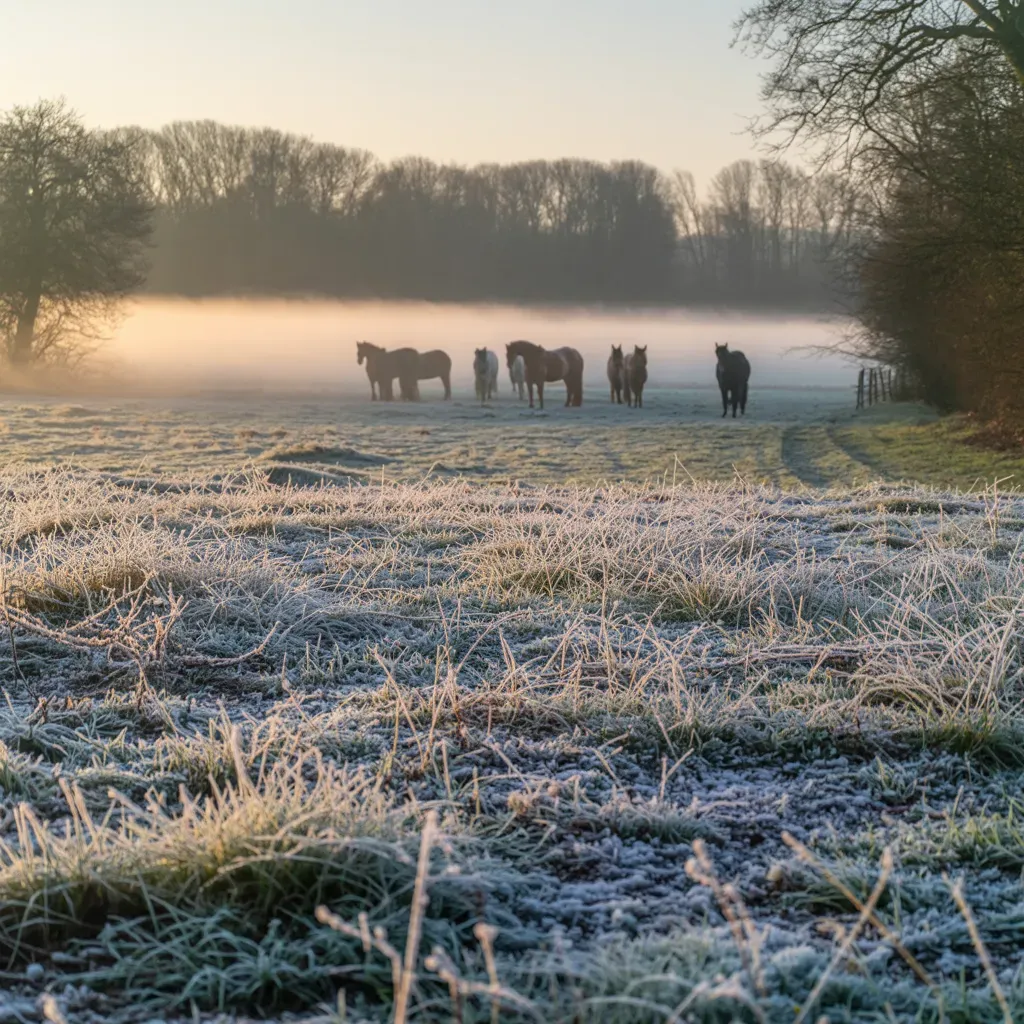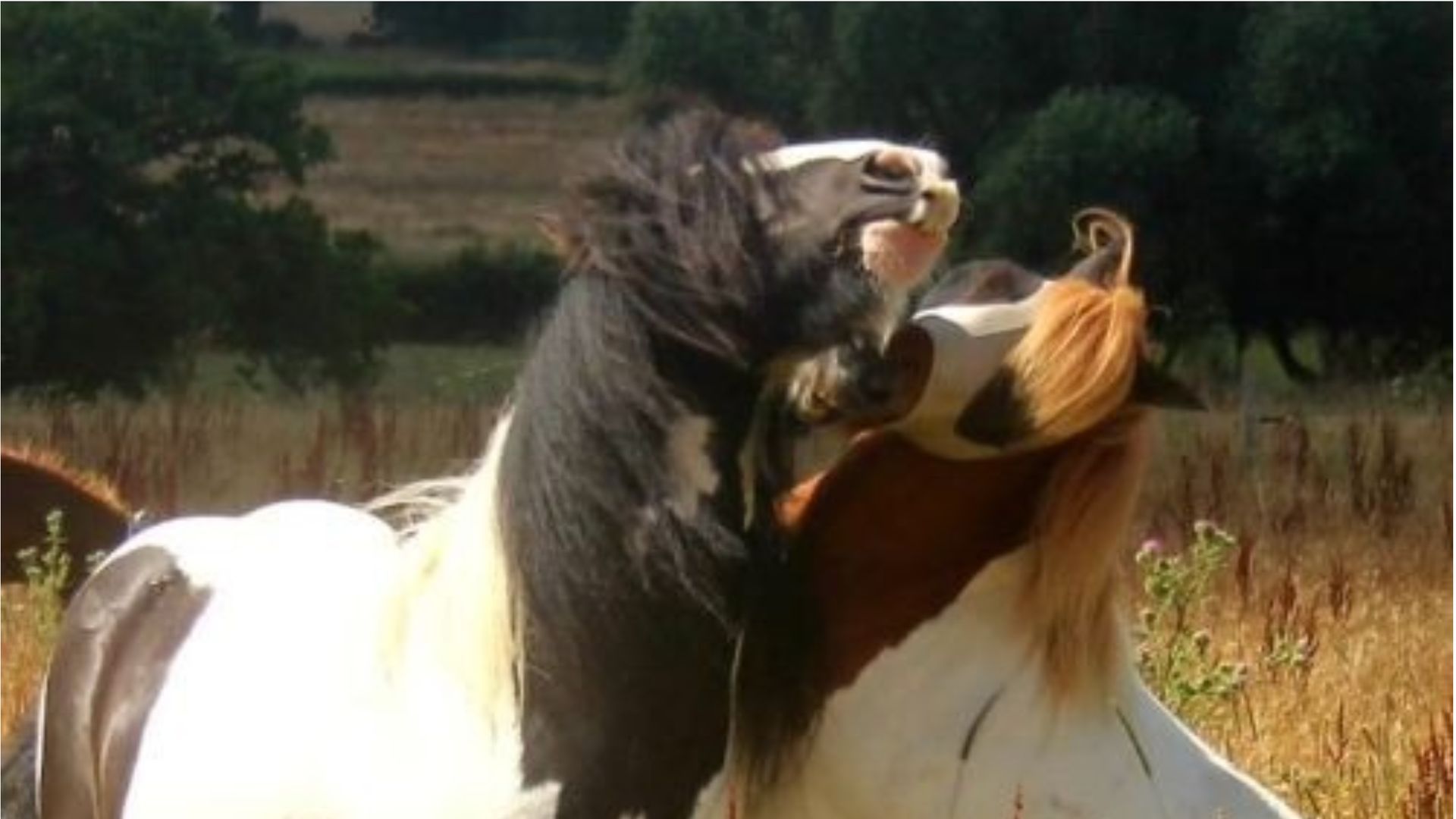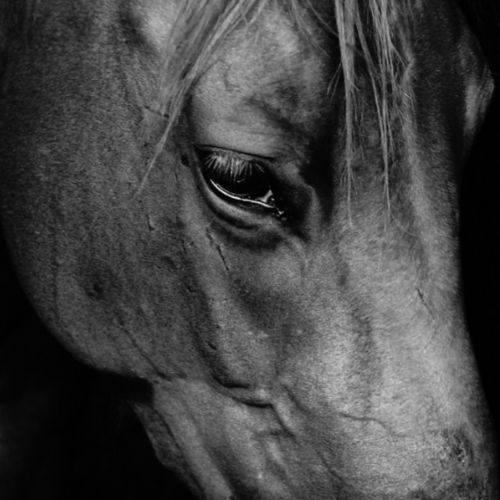Sarcoids? Let's break it down ...
Sarcoids - a name given to:
"... a spectrum of skin tumours considered to be an inflammatory systemic condition that produces tiny lumps of cells (granulomas) in and on the body. Granulomas are a mass of chronically inflamed tissue with granulations linked to a form of infection."
The name ‘sarcoid’ was originally given to the human condition in 1936 by a Dr. Jackson, a pathologist in South Africa. He used the name to describe the condition’s generally sarcomatous (tumourous) appearance. Prior to that, the condition was simply termed ‘wart’.
When it comes to our horses though, and no matter what products are out there, you’ll read everything from ‘worked like a miracle’ to ‘didn’t help at all’. One thing’s for certain though; they provide us humans with a level of hair-pulling frustration rarely seen with other equine conditions.
Personally I’ve not owned a horse with sarcoids, although my first pony passion (pocket-rocket Charlie at the local riding stables when I was a child) had a horrid one on his left eyelid, year in and year out. It was the shape and size of an adult human thumb, and every year it was banded off, yet sure as eggs are eggs it would grow right back again the following year. Which makes perfect sense - the sarcoid itself may have died through having its blood supply banded off, but the virus was still in Charlie's body to regrow right back.
Cut to 50-years on, and my former neighbour had a very charming Appaloosa who, as long as I’ve knew them (several years), had been afflicted with multiple sarcoids on his body, the worst being a horrible knarly growth, the size of a fist, literally surrounding his entire left eye socket. It was incredibly sore for him, with many open cracks, bleeding and weeping. My neighbour spent every spare waking moment researching a fix for him, and trying just about every product on the planet, including expensive products from the US. Needless to say we shared lengthy chats on all things sarcoids.
Of course, over the years I’ve had my own thoughts and opinions on sarcoids. Nevertheless, without any concrete evidential proof of anything that actually works for definite, whether natural or conventional, I’ve always been reluctant to promote any herbal support for the many enquiries I get for sarcoids, other than based around supporting immunity.
I’ve always believed that a poorly functioning immune system was somehow at the heart of sarcoids, and as we all know, immunity is at the very core of, well, everything. If immunity is in some way compromised, ‘stuff’ happens, and we also now know that the immune system relies entirely on a healthy gut microbiome. So, with a healthy biome and a healthy, fully functioning immune system, in theory the body should be equipped and ready with a strong resistance to have a darned good go at fighting whatever's invaded the host body.
When it comes to sarcoids, though, we're talking about a very clever, cunning, stealth microbe
A quick reminder - all cells in all organs in the body are anchored in a huge connective-tissue network, and wellness boils down to one thing: the health of the cells of the body.
With research identifying a well-known cause of equine sarcoids being via infection from Bovine Papillomaviruses (BPV - we go into this in more depth below), the invading microbes settle deep into the body’s connective tissue’s cells, which are everywhere in the body, so deep-rooted connective tissue – including tendons, ligaments, joint cartilage - fits the bill perfectly for this virus (similar to the Lyme Disease bacteria) to stay well hidden.
Note: This is why legs very often become swollen, because the lymphatic system (the body’s toxin drainage system) is flooding the site with gallons of its congestion-removing fluid, lymph, desperately trying to weed out the invader, but failing badly because it's so well hidden.
Pulling this altogether, it’s that old catchphrase – ‘Fix the cell to get well’, which if you're a regular reader here you'll know it's a bit of a persona mantra of mine - I ramble on about this a lot on the website 😉.
The good news is that cells can recover from being stressed because the body's cells are constantly in a state of regeneration - it’s what they do and it's what healing is all about. Cells can repair internal damage, and even when they’re injured beyond repair, other cells in the body can divide to make replacements. The body's cells are just a little bit awesome. 😉
It's no secret that the immune system plays a vital role in the body’s healing process. However, when the immune system can’t do its job, all cells in the body suffer. It becomes a cycle that increases cellular stress throughout the body, and increases the burden on the immune system, which intensifies the process of chronic illness. It's important, therefore, to make sure we do everything possible to lessen the risk of cellular stressors.
Here are the main offenders:
- Inappropriate diet – ensure your horse always has an appropriate grass forage fibre diet with plenty of hay going through the hindgut, and avoid all cheap feeds that have numerous bulk fillers in – always feed a grass forage fibre cob, nut or chaff as your base feed carrier.
- Toxic environment - there’s no doubt we live in a modern-day toxic world; toxic substances in water, food and air, or those that come in contact with skin.
- Chronic mental stress - disrupts the normal rest-and-digest mode, a necessity if cells are to have downtime to recover from being stressed.
- Sedentary lifestyle – movement is Key! Until around 100 years ago, horses were our tractors and 4x4’s. These days? They’re pets mooching slowly around a field or standing for hours in a stable. Movement means increased blood flow, which flushes debris and metabolic waste away from the cells. Without regular movement, everything in the body stagnates; the vital toxin drainage channel, lymph, which needs movement to flow, comes to a standstill; toxic substances accumulate, muscles turn to mush, arteries become clogged, and cell loss is increased.
- Microbes – every ‘body’, whether human or horse, shares itself with trillions of microorganisms known as the microbiome; they outnumber the rest of the body’s cells by an astonishing 10:1! T'is true; we're more bug than human (or horse)! The microbe list includes thousands of different bacteria species and though we all generally have a mutually beneficial relationship with most of them, some aren’t so friendly, and beyond this, foreign microbes from the outside are also constantly trying to get inside the body.
Long and short, if the immune system is healthy, there's a low risk of causing harm. However, if the immune system becomes compromised, pathogens become problematic, and here’s what we have with sarcoids - certain microbes have adopted stealth as a primary strategy for evading immune functions. First, they enter the bloodstream, then they hitch a ride inside white blood cells to all the tissues throughout the body — muscles, joints, heart, organs, intestines - even the brain and nervous system.
Termed intracellular microbes, they’ve adopted the ability to live inside cells by cannibalising them for nutrients to survive and make new microbes. When that cell is used up, they emerge to infect other cells.
Despite intracellular microbes’ manipulative ways, the good news is that the immune system is well versed in all of their tricks. It evolved over millions of years from repetitive exposure to many thousands of microbes, and each encounter was recorded in the genes for future reference. The better the immune system ‘knows’ a microbe, the better it can slow its growth rate and maintain ultra-low concentrations in tissues.
However, notice I didn’t say the microbes are eradicated, because they are very good at persisting. A much more common outcome is a stalemate in which the stealth microbes are relegated, and their potential for harm is minimised with their natural aggressiveness kept in check by a strong immunity. But - they can stay alive and dormant, deep in the tissues for a lifetime. All they need is a weakness gap in the immune system's strength, and they're off and running again.
Though science is just starting to understand the role that stealth microbes and other opportunistic pathogens play, one fact is clear: everyone, even the healthiest of us, harbours a variety of intracellular microbes that are low-grade pathogens. However, so long as the immune system stays healthy, we’ll never hear from them.
But - an impaired immune function allows the pathogens in the tissues and gut to kick off and start to populate, and it’s not just one microbe that becomes activated. All the stealth microbes that have been dormant in tissues, pathogens in the gut and on the skin, will now start to set the stage for chronic illness.
The associated symptoms result from the immune system’s reaction to the microbes and the damage the microbes inflict upon the cells directly.
And then the pan boils over - meet CID (Chronic Immune Dysfunction).
Sarcoids update (as at 2017)
* A quick heads-up here - all of the following are my condensed notes from my own research on sarcoids. Sources are below and equally it's all out there on the world-wide-web.
Continual research and studies of equine sarcoids are proving invaluable in our understanding of them, and thank goodness for it, because research at least knows what sarcoids are not. They’re not a form of cancer, neither are they AIDS-related or an airborne disease. They’re also not contagious.
Sarcoids are the most common skin tumours to affect horses. They affect horses of all ages, breeds and colour. Six clinical types of sarcoids are recognised including occult, verrucose, nodular, fibroblastic, mixed and, sadly, malignant types. There’re no guarantees on how sarcoids will behave on any horse or how they’ll respond to a product; one size definitely does not fix all.
So on that cheery note, the variety of product options used in clinical practice include everything from cryosurgery, laser surgery, BCG immunotherapy and chemotherapy, and yet surgery appears to have a high failure rate due to the recurrence of the tumours. There’s also an extensive range of every kind of topical formula, from manuka honey (of which I've read good reports), zinc chloride cream and oddly, toothpaste (which many swear by).
Opinion time – personally I'm a bit on the fence regarding topicals for sarcoids, as I feel any topical interference could exacerbate cellular stimulation. That said, I've not read any sound studies on this though; this is just my own take.
What we can't argue with, though, is that with hundreds of different products used world-wide for sarcoids, this is a huge sign that there’s no known guaranteed fix. Certainly, there appears to be nothing effective enough to help against recurrence.
So let's look at the bovine papilloma virus (BPV)
Research has identified that a well-known cause of equine sarcoids is via infection with Bovine Papillomaviruses (BPV) types 1 and 2. It's now even thought that strains of BPV may be equine specific.
However, the method of transmission is still unclear, although flies are thought to be a significant factor, specifically the Musca autumnalis (face-fly) breed. The adult M.autumnalis wakes up from hibernation mid-spring and they just love cowpats. Loaded with all kinds of yuk from the cow poo, they then feed on secretions around not only cattle but also horse eyes, mouths and nostrils, mainly the female flies as they need extra protein provided by the animal host. They also love feeding on blood from horse-fly bites. The female flies then lay their eggs on fresh cow poo which hatch into maggots pretty soon after. 10-20 days later, there’s gazillions of new pesky adult face-flies.
For the record, this is the route that my neighbour thought caused Appy’s sarcoids. She consciously remembers a fly biting his eye and drawing blood; in all likelihood a pesky female face-fly landed with cowpat dribble on her feet and mouth. As the saying goes, the rest is history.
Science Alert: For the scientists out there, BPV-1/2 are "non-enveloped double stranded DNA viruses with a genome of approximately 8kbp that infect their natural host, cattle, causing papillomas of skin or mucosa which generally regress without eliciting any serious clinical problems in the host. None of the strategies for sarcoids directly target the viral infection."
Interesting study results
Individual equine sarcoid biopsies have identified both BPV types 1 and 2 but … It’s not yet known whether BPV is present in all sarcoids. It’s also unknown if the virus is found in other equine skin tumours or even in normal skin.
However, there are some pretty impressive statistics which prove it’s a major player. A study from the University of California, Davis, looked for BPV DNA in 55 sarcoid-affected horses, taking biopsies from both the sarcoids themselves and unaffected normal skin areas. A further 22 horses without sarcoids were sampled for comparison, as were several non-sarcoid skin tumours.
Here's the study result:
"Almost every sarcoid tumour observed (a whopping 98%) contained BPV DNA. 55% of horses with sarcoids had sarcoids with BPV-2, while 20% of those horses had BPV-1. 7% had both types of BPV present."
And the unaffected normal skin areas on the 55 sarcoid-afflicted horses? A surprising 63% of the normal-skin samples contained BPV DNA. All the biopsies from horses without sarcoids, as well as biopsies of other non-sarcoid tumors, were negative.
Wow. These findings suggest that BPV not only plays a role in sarcoid development, but is also capable of existing in a latent, non-virulent phase in the bloodstream/skin. This certainly gives a reason as to why surgical removal of sarcoid tumours is rarely successful because it just removes the visible presentation. There’s even a suggestion that surgery might actually activate the latent virus and trigger the formation of new sarcoids.
Top Tips to try
- If one of my horses developed sarcoids? Fly masks for sure, although the mouth would still be available for the flies. However, I'd be focusing on immunity as my priority, with lashings of Pau D'Arco herb alongside natural antiviral/antibacterial phytonutrients - - see our BioCARE blend - and obviously addressing gut health.
- Caroline Ingraham, founder of the Zoopharmacognosy field, has reported as a case study that a combo of rosehip shells (crushed, tea-bag cut, or ground) and barleygrass has been effective, fed as self-selection alongside other herbs including comfrey. See the full, fascinating chronical here: https://www.carolineingraham.com/animal-chronicles/horse-chronicles/equine-sarcoids/
- I've also personally met a lady whose horse had eye sarcoids, and used the rosehip/barleygrass method. She offered both as self-selection and her mare dove on them! It wasn't cheap - her mare devoured each in vast quantities.It also wasn't quick - it took over a year, but she kept a regular photo diary on her phone and showed me the images. Her mare's sarcoids started to noticeably shrink within a reasonably short time (can't quite remember, think it was a month or two) until they finally - and completely - disappeared. However, like I said, it took over a year, so grit and patience are necessities. We sell rosehip shells and barleygrass as individual items.
- Topically, Manuka honey is thought to help draw the virus out. Equally, as at Nov'20 in chatting with a client, she said she'd heard of an equal mix between flour and fine salt, smothered over the sarcoid. She reported that within 3-weeks the sarcoids had gone, but I'm not able to prove this.
Sources
- American Journal of Veterinary Research, 62(5), 741-744, 2001. Editor's Note: No research has suggested any risk of sarcoids from housing horses with cattle or on land previously inhabited by cattle.
- MRC-University of Glasgow Centre for Virus Research, Institute of Infection, Inflammation and Immunity, College of Medical, Veterinary and Life Sciences, University of Glasgow, Bearsden Road, Glasgow, Scotland, G61 1QH, United Kingdom
- Division of Life Sciences, University College, London, 5 University Street, London, WC1E 6JF, United Kingdom Veterinary Research 2012, 43:81 doi:10.1186/1297-9716-43-81 http://www.veterinaryresearch.org/content/43/1/81 © 2012 Finlay et al.; licensee BioMed Central Ltd.










